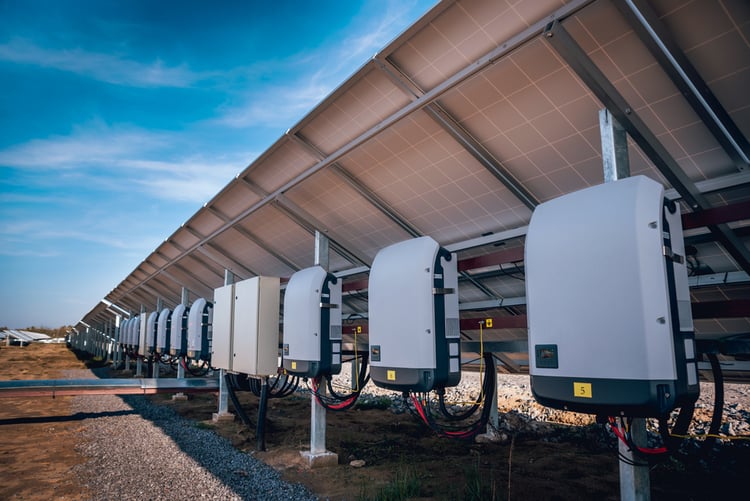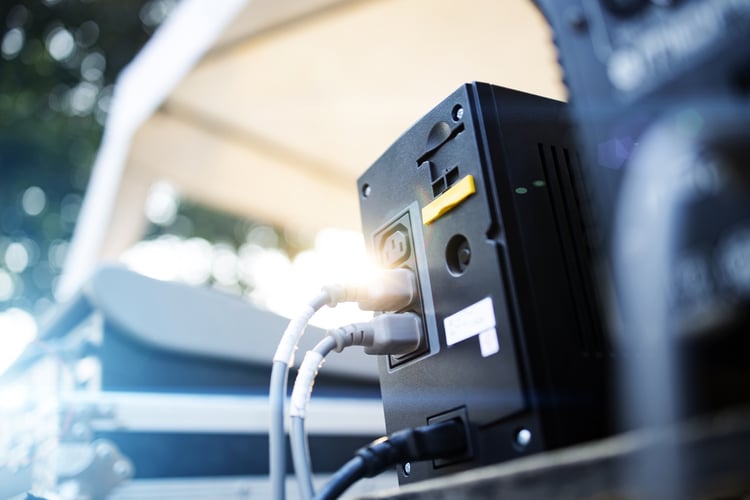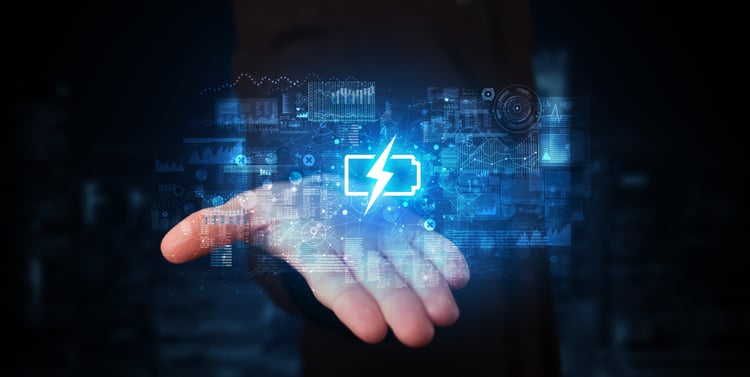Do You Need a UPS or an Inverter?

Inverters and uninterruptible power supply (UPS) units can both produce AC power from DC sources, and they are often confused for this reason. However, a UPS is a more sophisticated device with more functions, and it actually uses an inverter as one of its internal components.
In simple terms, an inverter receives electric power from direct current (DC) sources like batteries or solar panels, and it provides the alternating current (AC) used by most appliances. A UPS also has this function, but it has additional features like instant response and energy storage.
UPS units and inverters can be compared with air conditioners and compressors. Just like a compressor cannot deliver space cooling by itself, a stand-alone inverter cannot perform all the functions of a UPS.
How Does an Inverter Work?

The main function of an inverter is converting electric power from DC to AC, as discussed above. Note that inverters only convert power, and cannot generate or store electricity by themselves. If you disconnect an inverter from its DC source, the AC voltage supply is interrupted.
- Like any piece of electrical equipment, inverters have a rated power. For example, most residential solar power systems use inverters below 10 kW, while medium-sized commercial installations are likely to exceed 100 kW.
- In addition to having a power rating, inverters are designed to operate within a certain range of voltage in current, in both their DC and AC sides.
Variable frequency drives (VFD) are often referred to as “inverters” because many models produce three-phase AC power from a DC input. However, this naming practice causes confusion, since the purpose of a VFD is controlling motor speed by adjusting voltage and frequency. Just like a UPS, a VFD uses an inverter as one of its internal components, but it has additional functions.
How Does a UPS Work?

An uninterruptible power supply or UPS has a self-explanatory name - it provides electric power without interruption, especially during blackouts and power grid disturbances. However, uninterruptible power is only possible when two conditions are met:
- Energy storage, which is used by the UPS when the electric service is interrupted. The energy storage function is normally accomplished with batteries and a charge controller.
- Instant response, so that all equipment connected to the UPS can continue operating when the blackout occurs. For example, UPS units are used in data centers to protect information and hardware when there are power grid issues.
Note that inverters can also be used as backup power supplies, when combined with energy storage systems. However, a conventional inverter cannot achieve the seamless transition offered by a UPS. Inverters can respond in less than one second, but they aren't fast enough to prevent data loss in IT applications. UPS units are much faster, on the other hand, responding in a matter of milliseconds.
Ensure Your Appliances Have a Reliable Backup Power System!
Inverter and UPS Unit: Summary of Main Differences
| DEVICE | INVERTER | UPS |
| Main function | DC to AC power conversion. | Backup power with no interruption. |
| Energy storage | No, but many inverter models can use external storage. | Yes, includes built-in storage and addons to extend battery time. |
| Response speed | Around 500 milliseconds. | Less than 10 milliseconds. |
| Power input | Only DC, requiring a charge controller to fill batteries with AC power. | AC and DC options. |
| Output connections | Only AC terminals. | Normally includes receptacles to connect appliances directly. |
Assuming the same rated power, a UPS is normally more expensive than an inverter, given its additional components and functions. UPS units are necessary in applications that demand continuous power during a blackout, but inverters with external batteries are cost-effective when this function is not needed. For example, you would not want to leave a data center without power (UPS), but a brief disconnection of your lighting system can be tolerated (inverter + energy storage).
When you charge batteries using the main electric service, there are two power conversions involved. The AC supply is first converted to DC for battery charging, and the battery output is converted back to AC. Battery charging requires DC power, and you need a rectifier when using an AC input. UPS units include this component, but an external charge controller is required if you have batteries connected to an inverter.
Combining UPS Units and Inverters

Since UPS units are more expensive, it does not make sense to size them for hours of operation with no power supply. A smarter approach is having a short-term UPS capacity, providing time for a larger inverter + battery system to take over the load.
- An inverter with energy storage can be used as a direct power source for less critical loads such as lighting and ventilation.
- UPS loads can remain connected during an extended blackout, and you can simply recharge the UPS batteries with the inverter output.
Note that energy efficiency measures let you operate longer with backup power. For example, if you replace fluorescent lights with equivalent LED products that consume 50% less energy, they can last twice as long with backup power.
The best configuration changes depending on the loads present in your building. For example, an office with plenty of computers and communication equipment generally needs a large UPS. On the other hand, a storage area that only uses ventilation and lighting can use a conventional inverter with no problem. With a professional assessment of your installations and equipment, you can determine the optimal configuration.

Ankit Javeri
Ankit is the Project Manager at NY Engineers, who holds an M.Tech. Some of his projects includes Community Access, Jackson Avenue
Join 15,000+ Fellow Architects and Contractors
Get expert engineering tips straight to your inbox. Subscribe to the NY Engineers Blog below.

